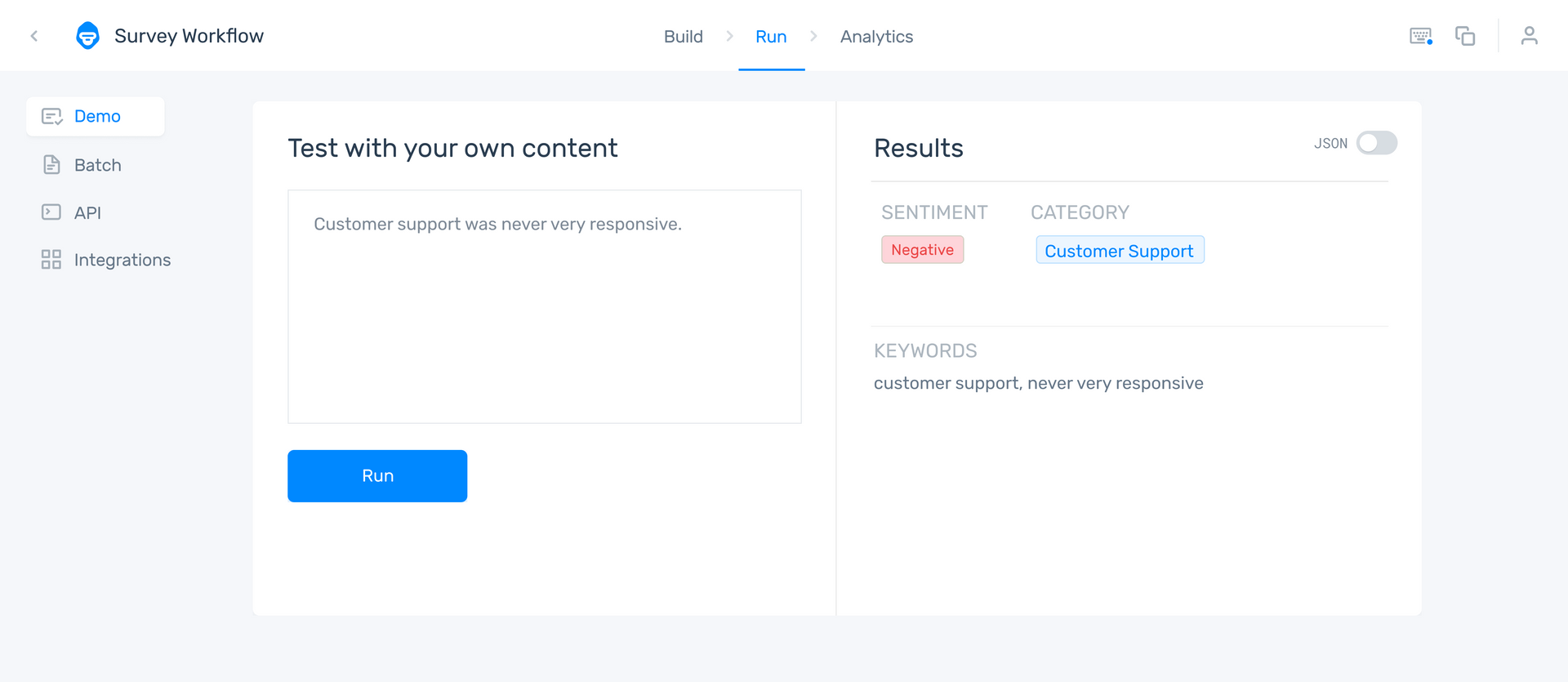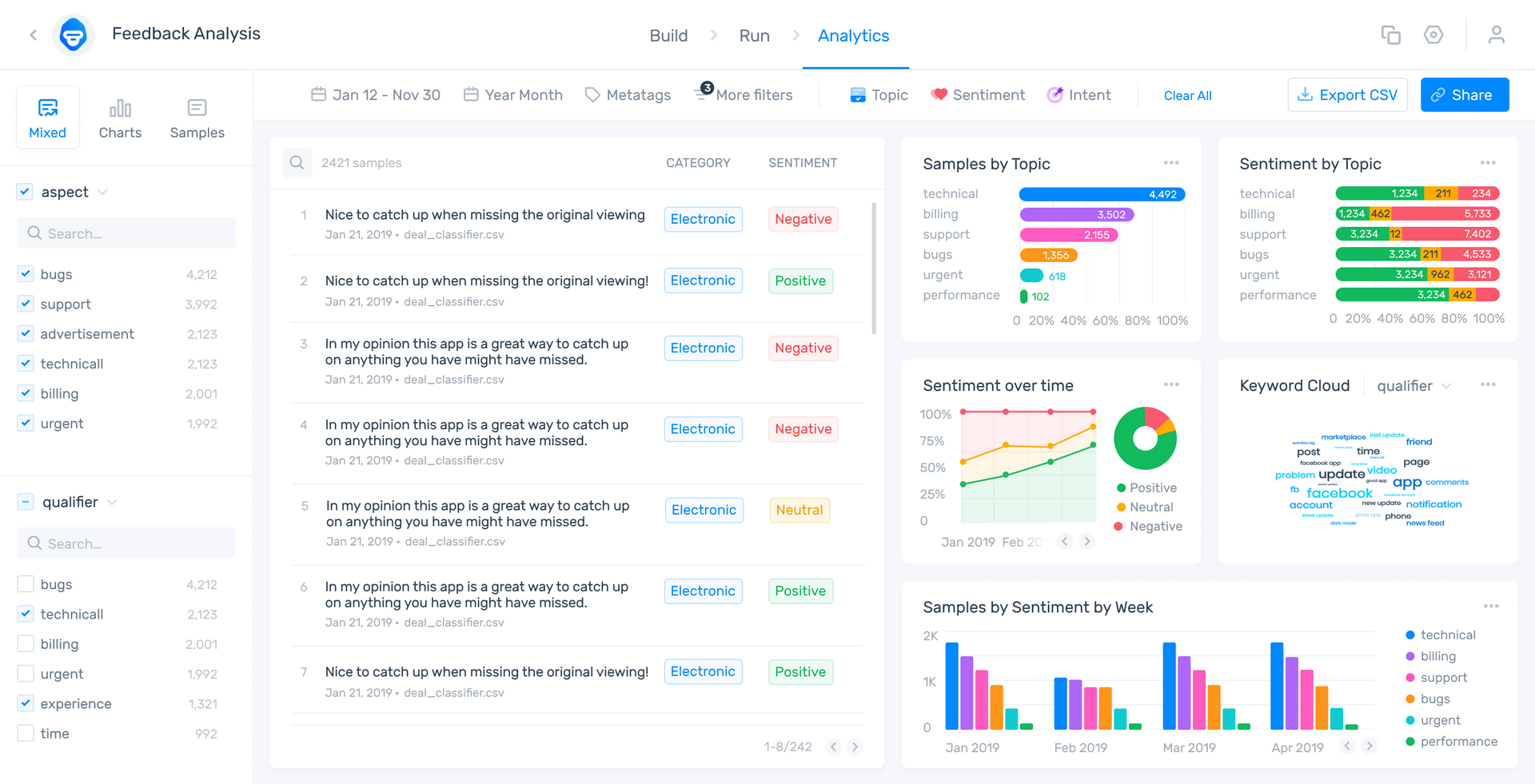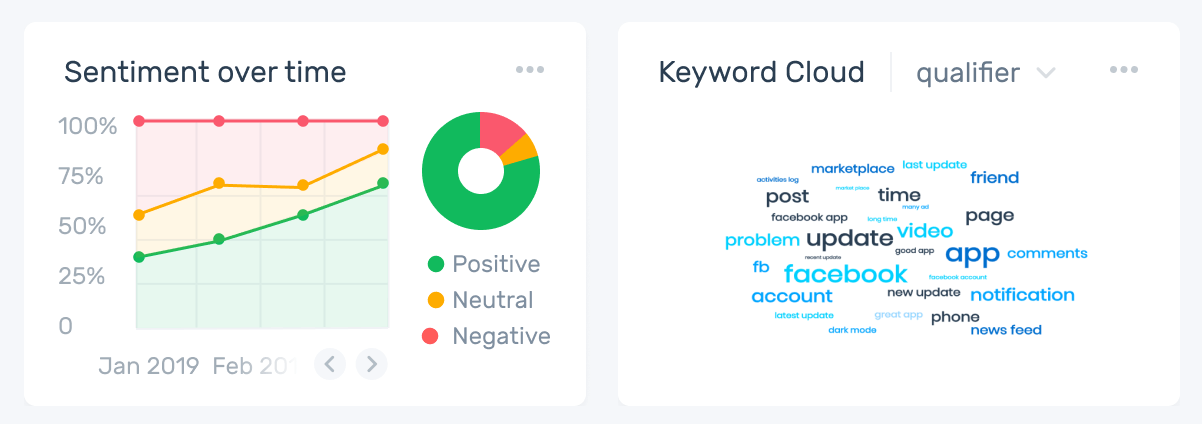Harnessing NLP For Customer Feedback Analysis

Manual analysis of customer feedback is an agonizing process that is exhausting to your employees and yields inefficient results.
Fortunately, new automated technology can speed up feedback analysis, unburdening employees and more accurately quantifying your customer feedback data for future analysis and strategic implementation.
Natural language processing (NLP) is the key to fast, accurate, and efficient feedback analysis, and allows forward-thinking businesses to understand customer data at scale and in real-time.
Here’s a guide to what NLP is, why it's important to analyze feedback with NLP, and the best methods to get your own program off the ground.
- What Is Natural Language Processing (NLP) Feedback?
- Why NLP Feedback Analysis Is a Must-Have
- How to Analyze Feedback With NLP
- The Case for Automated NLP Feedback
- Takeaways
Let’s get started.
What Is Natural Language Processing (NLP)?
NLP feedback is the automated analysis of text-based customer responses in order to gather actionable insight. Natural language processing (NLP) programs allow businesses to analyze large amounts of data at scale, saving time and manpower.
Why NLP Feedback Analysis Is a Must-Have
Say you are a telecom company that provides both phones and data plans – you likely have customer feedback coming at you from a variety of different sources – standardizing, categorizing and effectively analyzing that data is made possible through a number of NLP methods.
NLP feedback analysis is able to tackle this diverse and complex data at scale by utilizing ‘auto-tagging’ customer feedback systems.
These systems operate on the principle that every piece of customer feedback must be looked at and processed in order to create a unique and personalized response for each customer.
Above all, customers want to feel heard and that their problems are a priority. The best way to accomplish this? Listening more effectively.
In order to do so, modern companies are undergoing company-wide listening approach overhauls. The number one focus is on identifying and accurately analyzing pain points that customers encounter on their journey.
NLP AI can empower your CX management team to make the most of its voice of the customer (VoC) data at these points, reducing customer churn.
Preventing churn should top CX priority lists as preventing as little as 5% churn can lead to up to a 25% to 125% increase in profit.
How to Analyze Feedback With NLP
Embracing the importance of feedback accordingly, let’s look at the five most significant NLP approaches to feedback analysis (we’ve linked relevant in-depth articles and useful try-it-yourself NLP tools in the explanation of each below):
- Data Cleaning
- Topic Classification
- Sentiment Analysis
- Aspect-based Sentiment Analysis
- Keyword Extraction
- Named Entity Extraction
1. Data cleaning
Aka ‘data preparation’, data cleaning is an invaluable process in which your employees, ideally armed with helpful NLP programs, parse through your data to standardize and format it, preparing it for effective subsequent analysis. Read on about the various approaches to data cleaning here.
2. Topic Classification
Topic Classification is a subcategory of text classification, topic classification mines your raw, unstructured text for relevant keywords, enabling an AI to group your reviews and/or feedback by topic for you.
3. Sentiment Analysis
Sentiment analysis strives to comb your text data for customer sentiment, delivering you actionable info on each and every interaction.
See how this works by playing around with our free sentiment analyzer:
4. Aspect-based Sentiment Analysis
This is essentially a combination of the previous two processes, allowing you to sort feedback by topic and sentiment simultaneously.

5. Keyword Extraction
Keyword extraction tabulates the use of the most common keywords in large archives of raw text and generates useful displays and metrics to inform future business strategy.
Try out MonkeyLearn's free keyword extractor to see this in action:
6. Named Entity Extraction
Named Entity Extraction is another type of keyword extraction, this time specialized to locate named entities such as people or places. These ‘named entities’ can then be tabulated for insight and archived for future reference.
See this in action with MonkeyLearn's name extractor, which pulls names out of your text data.
The Case for Automated NLP Feedback
Now that businesses recognize the value of NLP, the debate has shifted to whether it’s better to ‘build’ or ‘buy’ an NLP program.
‘Build’ supporters make a convincing argument, citing built-from-scratch programs’ superior customizability – such programs could be built to fit the unique needs of each business.
But, even ‘build’ proponents recognize that programming an NLP system from scratch is a serious and lengthy undertaking.
Because of no-code, customizable, text analysis AI like Monkeylearn, the answer to ‘build vs. buy’ is often a lot simpler for many businesses.
These pre-built, programmable, and API compatible AI can implement an effective NLP feedback program for your business faster than was possible before.
If your goal is to implement the most powerful and efficient NLP feedback program possible, MonkeyLearn provides a pre-built product that is just as customizable as a custom built platform, but with much greater ease-of-use and superior scalability.
You’ll be able to onboard employees (including those with no technical background) faster and handle larger amounts of data quicker. Allowing all of your teams to reap the benefits of your customer feedback insights.
Furthermore, out-of-the box AI solutions like MonkeyLearn are instantly compatible with your existing software, because of a plug-and-play API and several integrations.
Pair MonkeyLearn’s NLP tools with our in-app data visualization dashboard (pictured below), and you’ll be able to continuously track and display customer feedback in real-time.
Request a demo to see how MonekyLearn’s NLP tools and data viz dashboard work together.
Here is a sample window of MonkeyLearn's Data Visualization Studio:

Let's zoom in to check out some examples of our dashboard’s various display capabilities.
First, you can see a summary of the reviews, with the corresponding "category" and "sentiment" tags:

Then, you can find two bar graphs showing the samples by topic and the sentiment by topic:

Finally, you can see the sentiment over time and a word cloud showing the most popular words:

Click around and play with custom inputs on our free public demo dashboard here.
Takeaways
If you leave with anything from this examination, leave knowing that you no longer have to choose between the arduous process of custom-building and the inefficiency of buying some rigid, pre-built software that takes forever to learn.
The world of modern AI has solved this problem by making their machine learning programs configurable to fit any businesses needs – and they’ve done so anticipating that a majority of their clients won’t be coders.
So you don’t have to pick a side in some long winded debate about form versus function – rather, you can choose from a number of tools meant to transform your data at your fingertips, and to your liking, without needing to type a single line of code.
Explore MonkeyLearn’s full suite of NLP products, or schedule a demo with one of our automation experts today.

Rachel Wolff
June 23rd, 2021






